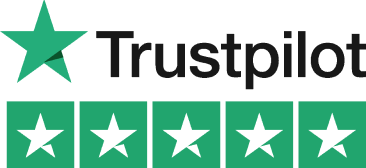Lets dive in shall we?
The world of self-employment brings freedom, but also tax responsibilities. Many new freelancers and small business owners find HMRC's tax system overwhelming at first, yet understanding how to pay tax when self-employed doesn't need to be complicated.
With the right approach, you can stay compliant while potentially reducing your tax bill. Are you ready to master your self-employed tax obligations?
In this article, we'll walk through everything you need to know about paying self-employed tax in the UK, from registration to submission deadlines.
When Do You Need to Register as Self-Employed?
You must register with HMRC once you earn more than £1,000 from self-employment in a tax year. This is called the Trading Allowance. The registration deadline is October 5th after the tax year in which you started your business.
You can register online through the HMRC website or by phone. The process typically takes about 10-15 minutes to complete. Being registered for Self Assessment doesn't automatically mean you're self-employed.
Different rules apply if you're running a limited company rather than being a sole trader. Limited companies require company registration with Companies House.
I remember panicking when I realised I'd been freelancing for almost 9 months without registering with HMRC. At Pie Tax, we were able to help me register just in time to avoid penalties.

How Does the Self Assessment Tax System Work?
Self Assessment is the system HMRC uses for collecting tax from self-employed individuals. It’s based on the principle that you report your own income. The tax year runs from April 6th to April 5th the following year.
You’ll need to complete a tax return annually reporting all your income and expenses. Accuracy is crucial to avoid HMRC investigations. Tax returns can be submitted online or via paper forms.
You’re responsible for calculating and paying your own tax and National Insurance, including ensuring you pay your self assessment. This is perhaps the biggest difference from employment.
Payments are typically due on January 31st and July 31st each year. It is important to pay your Self Assessment tax bill by these deadlines to avoid penalties. Have you set calendar reminders for these important tax dates?
During my first year at Pie Tax, I was surprised to learn clients needed to save receipts for even small business purchases – these deductions ended up saving them hundreds in tax.
What Tax and National Insurance Do Self-Employed People Pay?
Self-employed individuals pay Income Tax on their profits, not their total income, a crucial distinction many new business owners might overlook.
For the 2024/25 tax year, you'll pay Class 2 National Insurance if your profits exceed £6,725.
Class 4 National Insurance is due on profits above £12,570. The rates are 6% on profits between £12,570 and £50,270, and 2% on profits above that.
You receive the same Personal Allowance as employed individuals, which is £12,570 for the 2024/25 tax year. Income Tax rates remain unchanged: 20% (basic rate), 40% (higher rate), and 45% (additional rate), applying to different bands of your income.
Unlike limited companies, self-employed individuals don't pay employers' National Insurance.
For example, a client of mine was surprised to find that his effective tax rate was lower when self-employed than when employed, once legitimate business expenses were deducted from his taxable profit.

How to Calculate Your Self-Employed Tax Bill
Start by calculating your business profit (income minus allowable expenses). This is the figure HMRC will tax. Deduct your tax-free Personal Allowance from your total taxable income.
Apply the appropriate tax bands to your remaining taxable income. The bands and rates change slightly each year. Calculate your National Insurance contributions based on your profit level.
Don’t forget to claim for tax reliefs you’re entitled to, such as pension contributions. These can significantly reduce your tax bill. Consider using HMRC’s tax calculator or accounting software for accuracy.
It is crucial to pay your tax bill by the deadlines to avoid penalties.
Are you taking advantage of all available tax reliefs when paying your tax bill?
I once miscalculated my quarterly tax estimates and had set aside too little. Now at Pie Tax, we always advise clients to add a 10% buffer to avoid nasty surprises.
Reducing Payments on Account
If you anticipate a lower taxable income in the current tax year compared to the previous tax year, you might be able to reduce your payments on account. This can help you avoid overpaying tax and reduce your overall tax bill.
To reduce your payments on account, you’ll need to complete a Self Assessment tax return and submit it to HMRC.
Provide evidence of your reduced income, such as invoices, receipts, and bank statements. Once submitted, HMRC will review your application and adjust your payments accordingly.
You can also use the HMRC app to manage and reduce your payments on account.
For instance, one year I knew my income would be significantly lower due to taking a sabbatical. By reducing my payments on account, I avoided overpaying and kept more cash flow for my business

What Records Do You Need to Keep?
All sales invoices and income records must be kept for at least 5 years. HMRC can request these during an investigation. Business expense receipts should be organised and stored systematically.
Bank statements for business accounts are essential documentation. Consider having a separate business account to make record-keeping easier. Mileage logs are necessary if you use a vehicle for business purposes.
Proof of any pension contributions or charitable donations should be preserved. These can provide valuable tax relief. Consider using accounting software to streamline record-keeping.
My filing cabinet was overwhelming until I switched to a digital system. Scanning receipts immediately with my phone has saved countless hours of tax-time stress.
Seeking Professional Help
If you’re struggling with your tax obligations or need assistance with your Self Assessment tax return, seeking professional help can be a wise decision. Here are some options to consider:
- Tax Accountant: A tax accountant can help you with your tax return, provide advice on tax laws and regulations, and represent you in front of HMRC. Their expertise can save you time and potentially reduce your tax bill.
- Tax Advisor: A tax advisor can offer guidance on tax planning, tax savings, and compliance. They can also assist with your tax return and represent you in front of HMRC.
- Bookkeeper: A bookkeeper can help you maintain accurate financial records, provide financial statements, and assist with your tax return.
When choosing a professional, ensure they are reputable and experienced. Check their credentials, read reviews, and ask for referrals. The right professional can make a significant difference in managing your tax obligations effectively.
I once hired a tax accountant who not only helped me file my return but also identified several tax reliefs I wasn’t aware of, saving me a substantial amount of money.
By following these guidelines and utilising the resources available, you can confidently manage your self-employed tax responsibilities and focus on growing your business.

What Happens If You Miss a Deadline?
Missing the registration deadline can result in penalties. HMRC charges £100 for late registration, with additional penalties for extended delays. Late tax returns incur an immediate £100 penalty.
The penalties increase the longer your return remains outstanding. After three months, you’ll pay £10 per day up to a maximum of £900. Late payment penalties are separate from late filing penalties.
Interest is charged on both unpaid tax and penalties, as well as on the amounts you owe to tax authorities. This compounds over time, significantly increasing your debt. If you’re struggling to meet a deadline, contact HMRC proactively.
I once helped a client who hadn’t filed for three years. The penalties exceeded £1,500, but we negotiated a reduction by proving reasonable excuse.
Tips to Save Money on Your Self-Employed Tax Bill
Claim all legitimate business expenses. Many self-employed people miss deductions they're entitled to. Consider the cash basis accounting scheme if your income is below £150,000.
Make pension contributions to reduce your taxable income. These provide tax relief at your highest rate of tax. The Marriage Allowance could save you up to £252 if your spouse earns less than the Personal Allowance.
Use tax-deductible methods to fund business purchases. Leasing can sometimes be more tax-efficient than buying outright. Consider timing large purchases or income around the tax year end.
Working from home? Don't forget to claim allowable household expenses. You can use HMRC's simplified flat rate or calculate actual costs.
Conclusion
Understanding how to pay tax when self-employed is a crucial skill for anyone running their own business in the UK. With proper planning and regular attention to your finances, tax compliance becomes a manageable part of your business routine.
Consider consulting with an accountant if you're unsure about specific aspects of your tax situation. Their fees often pay for themselves in tax savings and peace of mind.
Rest assured that with the systems outlined in this guide, you'll be well-equipped to handle your self-employed tax responsibilities with confidence. At Pie Tax, we've helped hundreds of self-employed individuals navigate their tax obligations successfully.
Remember, staying organised throughout the year is far easier than scrambling at tax time. Your future self will thank you!




